-
Posts
2,860 -
Joined
-
Last visited
-
Days Won
19
Content Type
Profiles
Forums
Blogs
Gallery
Events
Store
Posts posted by Claudio
-
-
No, I don't think so... it's merely a pretty strange ribbon with unusual thick blacks stripes (like the ribbon of Deutscher Adler Orden) of the Erinnerungsmedaille an den Heimkehr Österreich... (Correction)
0 -
Hi Mike,
First of all the correct spelling of the name is Alfonso Moretti. This family name is from the Northern part of Italy and there are no Morretti (with two R). Alfonso spells it in Italian with one "f" instead of the "ph" (like in French or other European languages).
I couldn't find anything on internet, but on the correct spelling of his name I am quite positive. Moretti is quite a common last name.
Ciao,
Claudio
0 -
I am with Sascha on this one... Everything that this bar shows, perfect allined medals, immaculately folded ribbons, color of the backing with label, metal base of the bar, metal needle and catch, the typical kind of loose stitching on the back, the not so flawlessly folded ribbon rosettes on the bottom and back of the back... I mean this bar shows all the details of a typically medal bar put together by Godet. Now I might have given too many info to the fakers...

In the past some unlabelled bars have been described as "Godet", when to me they weren't (I own more than 20 of Godet bars). This one is one of it. If the actual owner doesn't want it anymore, I will be more than willing to buy it from him!
 :whistle:
:whistle: Moreover I don't why I no Prussian couldn't have received the St. Heinrich Order... maybe not common but possible.
If you want to discuss this Godet bar any further, please do it in another separate thread, since I was trying to research and gather info on the bar of Obltn von Rothkirch und Panthen.
Ciao,
Claudio
0 -
Here's the shield carried by an Ancestor of the above-mentioned medal bar holder who was a Bannenträger (Fahnenträger) during the battle...
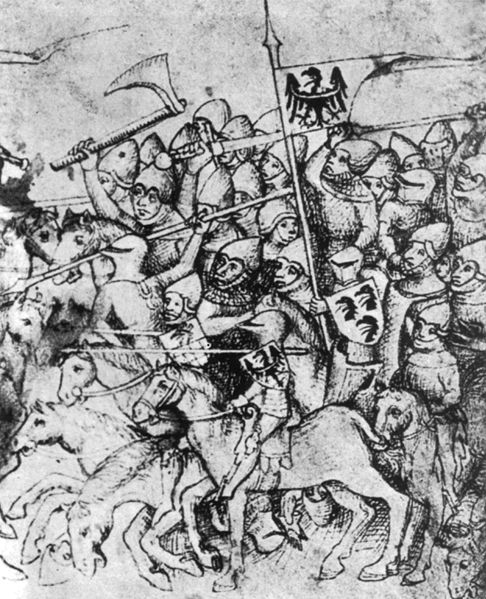 0
0 -
Dear forumites,
I was browsing on Wikipedia reading about the battle of Liegnitz ( http://en.wikipedia.org/wiki/Battle_of_Legnica ) and discovered this very interesting information about this medal owner's ancestors on German Wikipedia (http://de.wikipedia.org/wiki/Schlacht_bei_Wahlstatt):
Folgen der Schlacht
Der polnisch-deutsche Blutzoll des Kampfes war ungeheuer. Sämtliche höheren Kommandeure kamen ums Leben, allein Herzog Friedrich von Österreich konnte sich retten. Sechs schlesische Adelsfamilien verloren bei Liegnitz nahezu alle ihre Väter und Söhne. Die späteren Grafen von Strachwitz beklagten 14 Gefallene. Von der Familie Rothkirch starben sämtliche männlichen Familienmitglieder, bis auf einen nach der Schlacht geborenen Knaben. Schwere Verluste erlitten auch die Familien Nostitz, Seydlitz, Prittwitz und Zedlitz.
Doch die Verluste der Mongolen waren ebenfalls außerordentlich. Nach einem vergeblichen Versuch, Liegnitz zu erobern, stoppte Baidar Khan den Marsch nach Westen und zog mit seinen Truppen südlich zur Hauptmacht nach Ungarn. Unterwegs wurden mongolische Truppenteile von Gotthart Brandis zurückgeschlagen. Die Mongolen zogen sich entlang der Sudeten nach Mähren zurück. Da nach der Umkehr der Mongolen die abendländische Allianz wieder zerfiel, stand Böhmen nun allein den Mongolen gegenüber. Die Gebirgspässe bei Kłodzko (Glatz) ließen sich zwar sperren, aber nach der Einnahme von Racibórz (Ratibor) und Opava (Troppau) fielen die Mongolen durch die Mährische Pforte in Mähren ein, nahmen Prerau, Littau, Wischau sowie andere Städte und verwüsteten die Hanna-Ebene. Nur zwei mährischen Städte - Olmütz und Brünn – sowie das nordostungarische Neustadt am Zeltberg widerstanden und wurden von den Mongolen erfolglos belagert. Olmütz wurde durch 6.000 Mann unter Jaroslaw von Sternberg verteidigt, der bei einem Ausfall Baidar Khan im Kampf getötet haben soll. Die Mongolen rückten drei Tage später von Olmütz ab und schlossen sich in Ungarn wieder Batu Khans Hauptheer an. Trotz ihres Sieges auch über die Ungarn drangen die Mongolen nicht weiter nach Westen vor, möglicherweise weil Großkhan Ögedei Khan im Dezember 1241 starb und die Erbfolge unklar war. Vermutlich zogen die mongolischen Anführer ab, um einen neuen Herrscher zu wählen.
Auf dem Schlachtfeld ließen die Mutter und die Frau Heinrichs, die Herzoginnen Hedwig und Anna von Böhmen, eine Propstei errichten und übergaben diese den Benediktinern des Klosters Opatowitz bei Königgrätz. Heinrichs Leichnam wurde gefunden. Der um die Propstei entstehende Ort wurde nach dem Allgemeinbegriff Schlachtfeld Wahlstatt genannt; seit 1948 heißt er Legnickie Pole (d. h. Liegnitzer Feld). Noch heute findet in der Propstei jedes Jahr am 9. April ein Gottesdienst zur Erinnerung an die Schlacht statt.
Vettern von Wahlstatt
Vettern von Wahlstatt nannten sich später sechs schlesische Adelsfamilien, von denen jeweils nur ein männliches Familienmitglied die Schlacht überlebt haben soll – die Familien Rothkirch, Strachwitz, Nostitz, Seydlitz, Prittwitz und Zedlitz. Einem Mythos zufolge verlor die Familie Rothkirch alle männlichen Familienangehörigen in der Schlacht. Einzig ein erst nach der Schlacht geborener männlicher Nachkomme existierte. Für diesen übernahm der Bund der überlebenden Kämpfer die Vormundschaft. Die heute lebenden Mitglieder dieser sechs Familien veranstalten regelmäßig Treffen im Gedenken an den Tag der Schlacht.
He practically says that during this battle where a confederation of poles, silesians and Christian orders were defeated by the Mongols, the noble Rothkirch family lost all his male descendants, but one who was born after the battle. Incredible...
I am still looking information (exact names and CV) on the holder of the medal bar. Any pointers or suggestions are most welcome!
Ciao,
Claudio
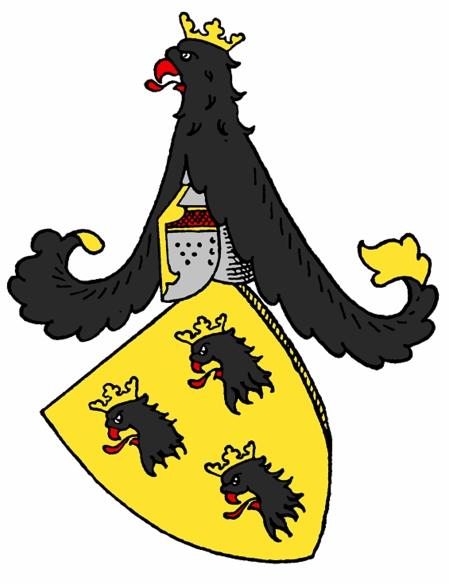 0
0 -
...and here a tunic of a Feldpost-Sekretär (Leutnant) for sale on Weitze's website:
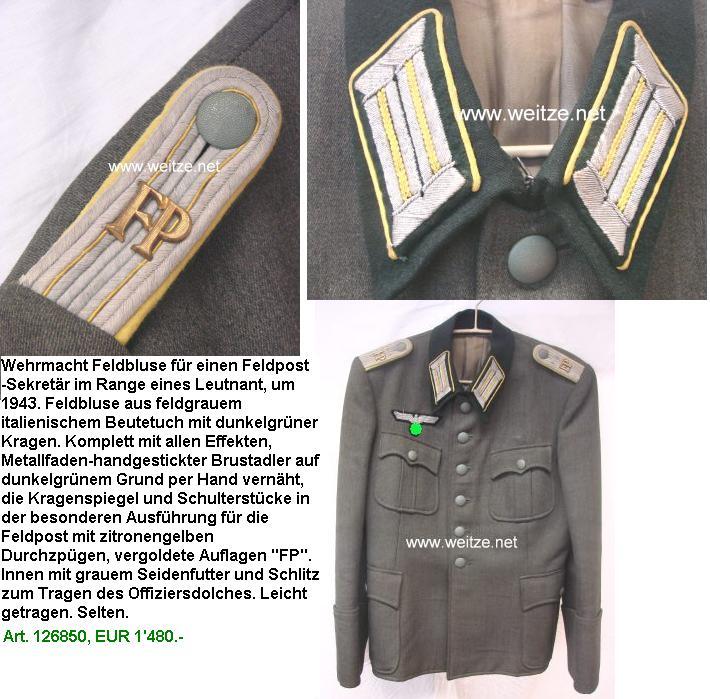 0
0 -
Comparison of mail service ranks with those of the German Wehrmacht official, look also this thread in German (but no pictures of the insignia, just a couple of blurred photographs of mail service officials of the Wehrmacht):
http://www.forum-der-wehrmacht.de/print.php?threadid=10513&page=1&sid=964b7f541694dca43b33f1d96adacdb9
 0
0 -
Hi Alex,
This might help you...
Ciao,
Claudio
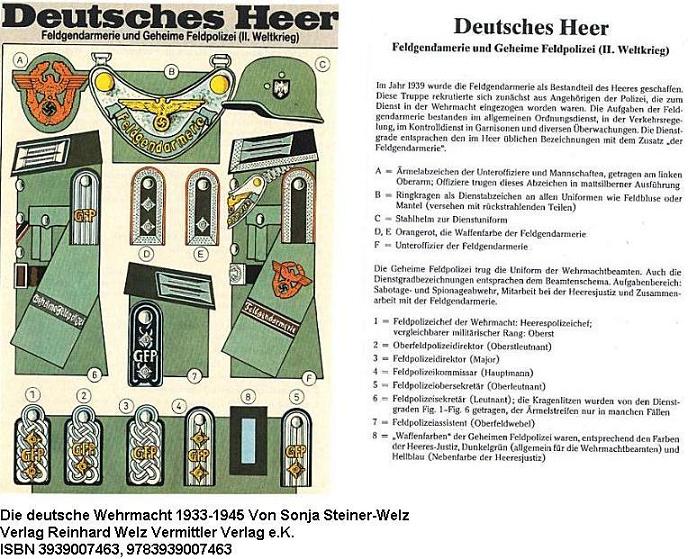 0
0 -
It's a small world... who knows if the von Nidda you show on your photograph is the same like my von Nidda (later German Consul General in Vichy):
http://gmic.co.uk/index.php?showtopic=40338&st=0&p=373485&hl=krug%20von%20nidda&fromsearch=1&#entry373485
ciao,
Claudio
0 -
Hi Beau
Fascinating that a German State knight 2nd class with crown less scarce then without. Oldenburg must the only State that has that unique distinction. By chance do you know how
many were awarded with crown. Also any idea what the numbers were awarded between 1906-18 with crown. Thanks
Sincerely
Brian
Really?! ...then this one must be a hell of a group!
 ... and I have got also the document for the Oldenburg HO u. VO Herzog Peter Friedrich Ludwig, RK2...
... and I have got also the document for the Oldenburg HO u. VO Herzog Peter Friedrich Ludwig, RK2...Bezeichnung:
7er Ordensspange des Kapitäns zur See Gerhard Meyer
(*03.01.1889 - † 17.08.1980)
• Preußen, Eisernes Kreuz 2. Klasse, 1914 (OEK 1909), E/S
• Oldenburg, Friedrich-August Kreuz 2. Kl. mit Spange „vor dem Feind“ (OEK 1563)
• Deutsches Reich 1933-45, Ehrenkreuz für Frontkämpfer (OEK 3803/1),
Hersteller G & S, Godet & Sohn Berlin
• Oldenburg, Haus- und Verdienstorden von Herzog Peter Friedrich Ludwig, Ritterkreuz 2. Klasse (OEK 1523), S
• Deutsches Reich 1933-45, WH-Dienstauszeichnung f. 25 Jahre, Kreuz (OEK 3852)
• Deutsches Reich 1933-45, WH-Dienstauszeichnung f. 12 Jahre, Medaille (OEK 3854)
• Italien, Erinnerungsmedaille des Erdbebens in Messina 1908
Born on 03.01.1889, entered Navy on 01.04.1908. As Seekadett, he was onboard SMS Victoria Louise in the Messina relief campaign. Leutnant 27.09.1911 J5i, Oberleutnant 19.09.1914, Kapitän-Leutnant 18.8.1918 and was an officer on the SMS Pillau in WW1. He commanded the "Friedrich August Batterie" of XII. Matrosen-Artillerie Abteilung until November 1918 and then as a Watch and the Gunnery Officer on S.M.S. "Pillau" for the rest of the war.He advanced to Korvettenkapitän 01.04.1927 in the Reichsmarine, Fregattenkapitän 01.10.1932. His final grade was charakterisiert Kapitän zur See (E) 30.9.34, in which he was "active" in 1937 on the staff of the Reichs War Ministry, Naval High Command, Abteilung für Artillerieentwicklung und Konstruktion ("M Wa I") of the Marinewaffenamt. The pre-war 1939 M.O.V. Directory shows him as "zD" but still there, with his office phone number. He went z.D. in 1940. In 1960 he was living with his wife Marie Luise (born 8.6.1XXX) at Breitestrasse 13, Berlin-Steglitz, and was a sales representative of the "CDH" bedding company of Bochum, specializing in quilts, mattresses and so on. By 1963 he had re-retired from that job, and was living at 15 Hortenstrasse 20B, Berlin 15. Kapitän zur See außer Dienst Gerhard Meyer died 17 August 1980.
 0
0 -
-
A German dealer (CB) has also one for sale right now (Eur 1'500.-)... it's not a bit strange that such rare as hen's teeth decorations are beginning to pup up everywhere? Just a thought.
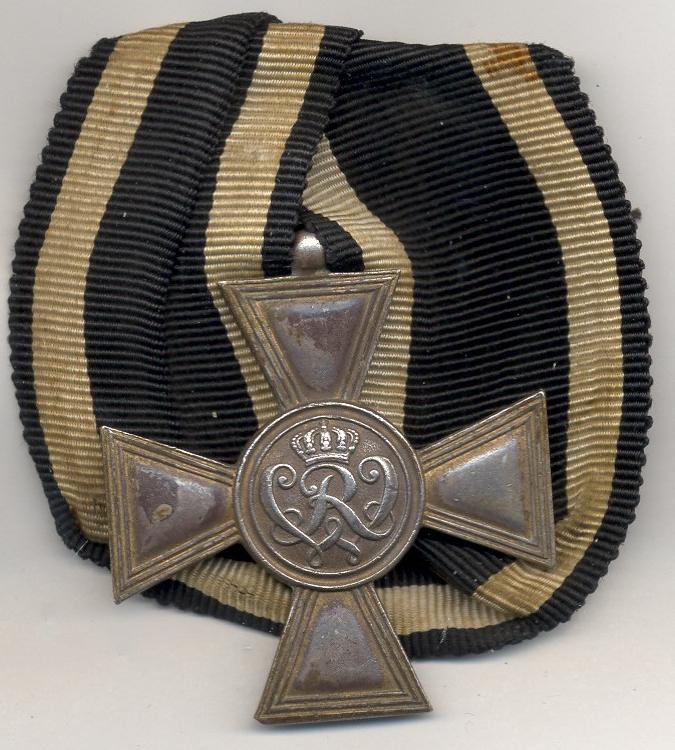 0
0 -
Hi Alex,
Starting from top to bottom, the first one is for sure a Swedish Sword's Order (http://en.wikipedia.org/wiki/Order_of_the_Sword), the second is a Bulgarian Order of Military Merit ( http://en.wikipedia.org/wiki/Order_of_Military_Merit_(Bulgaria) ), the third one a hungarian Order of Merit ( http://www.axishistory.com/index.php?id=4260 ) and the last but not least is a very likely, I am not so sure, a Polish Order (http://en.wikipedia.org/wiki/Order_of_Polonia_Restituta), since it seems unlikely that Polish officials would award a German or Ex Austria-Hungarian subject with a Polish order, but you never know...

ciao,
Claudio
0 -
Köhl's assessment of Falke (Falke's commanding officer and squadron leader) saying that, if he hadn't been taken prisoner shortly before war end, he would have feel obliged to propose Falke to be awarded with the Pour le Mérite... :rolleyes:
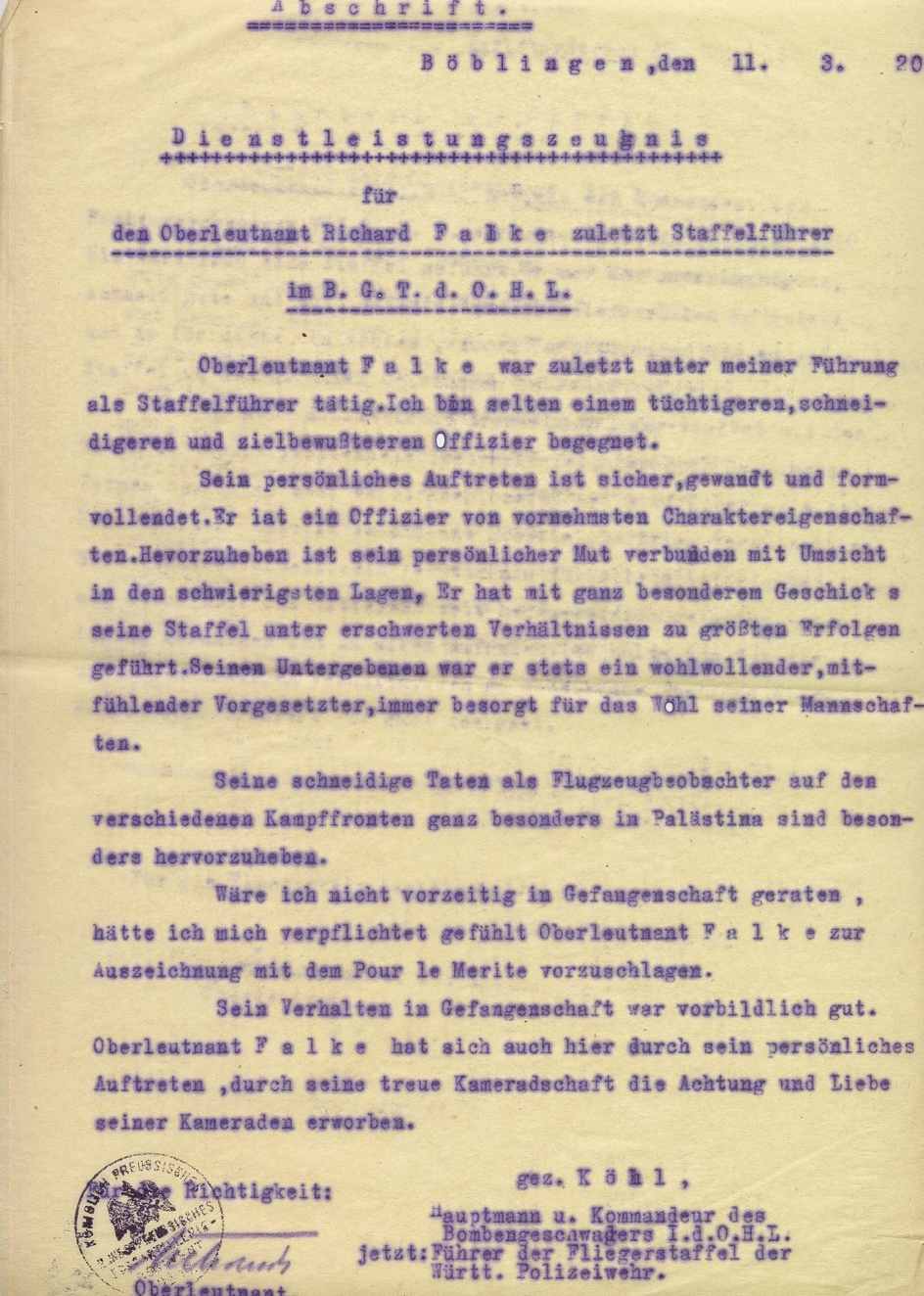 0
0 -
Dear forumites,
I am not quite sure of the provenance of this collar embroidery; could it be of a Prussian General?
Thanks in advance for your most valuable inputs.
ciao,
Claudio
 0
0 -
Here I have more info to share...

Militärische Laufbahn
15.04.1875 Sekondeleutnant
06.12.1883 Premierleutnant
20.09.1890 Hauptmann
30.05.1896 Major
12.09.1902 Oberstleutnant
15.09.1905 Oberst
22.03.1910 Generalmajor
22.04.1912 Generalleutnant
27.01.1917 General der Infanterie
Dienststellungen
15.04.1875 Sekondeleutnant im Infanterie-Regiment 88
01.10.1881 Bataillons-Adjudant im Infanterie-Regiment 88
01.10.1885 -
21.07.1888 Kommandiert zur Kriegsakademie
22.03.1889 Ab 01.04.1889 kommandiert zum Grossen Generalstab
18.11.1890 Kompaniechef im Infanterie-Regiment 88
15.11.1890 Kompaniechef im Infanterie-Regiment 115
17.02.1894 Ia im Generalstab der 30. Division
12.09.1896 Ab 01.10.1896 in den Grossen Generalstab versetzt
10.09.1898 Ia im Generalstab des I. Armee-Korps
14.09.1900 Ab 01.10.1900 Kommandeur des I. Battallions des Infanterie-Regiments 95
18.08.1902 Abteilungschef im Grossen Generalstab
18.10.1902 Mit der Vertretung des Chefs des Generalstabs des III. Armee-Korps beauftragt
22.11.1902 Chef des Generalstabs des III. Armee-Korps mdWdGb
01.09.1903 Chef des Generalstabs des III. Armee-Korps
22.03.1907 Kommandeur des Infanterie-Regiments 115
22.03.1910 Kommandeur der 74. Infanterie-Brigade
03.02.1911 Oberquartiermeister im Grossen Generalstab
21.02.1911 -
23.12.1912 Zugl. Auch Mitglied der Studienkommission der Kriegsakademie
19.11.1912 Kommandeur der 1. Garde-Infanterie-Division
04.04.1915 Kommandierender General des XXI. Armee-Korps
02.01.1917 Oberbefehlshaber der Armee-Abteilung D (Dünaburg)
22.04.1917 Oberbefehlshaber der 8. Armee
22.12.1917 Oberbefehlshaber der 18. Armee
14.01.1919 verabschiedet
01.12.1919 -
05.12.1934 Vorsitzender des Deutschen Offiziersbundes (D.O.B.)
Orden & Ehrenzeichen
13.09.1906 Preussen, Kronen-Orden 2. Klasse
1909 -1910 Hessen-Darmstadt, Ludewigs-Orden Ritterkreuz 1. Klasse
21.01.1912 Preussen, Roter-Adler-Orden 2. Klasse mit Eichenlaub
02.06.1913 Preussen, Stern zum RAO 2. Klasse mit Eichenlaub und Krone
13.09.1914 Preussen, Eisernes Kreuz 2. Klasse
20.09.1914 Preussen, Eisernes Kreuz 1. Klasse
12.10.1915 Preussen, Schwerter zum RAO 2. Klasse mit Eichelaub und Krone
06.09.1917 Preussen, Pour le Mérite
16.11.1917 Sachsen-Königreich, St. Heinrich-Orden, RK und Komturkreuz 2. Klasse
23.03.1918 Preussen, Eichenlaub zum Pour le Mérite
07.05.1918 Sachsen-Königreich, St. Heinrich-Orden, Komturkreuz 1. Klasse
22.06.1918 Preussen, Roter-Adler-Orden 1. Klasse mit Eichenlaub und Schwertern
15.10.1918 Preussen, Hausorden von Hohenzollern, Komturkreuz mit Schwertern und Stern
I would be interested to know the exact award date of his hessian Ludewig-Order, knight cross 1st class...
ciao,
Claudio
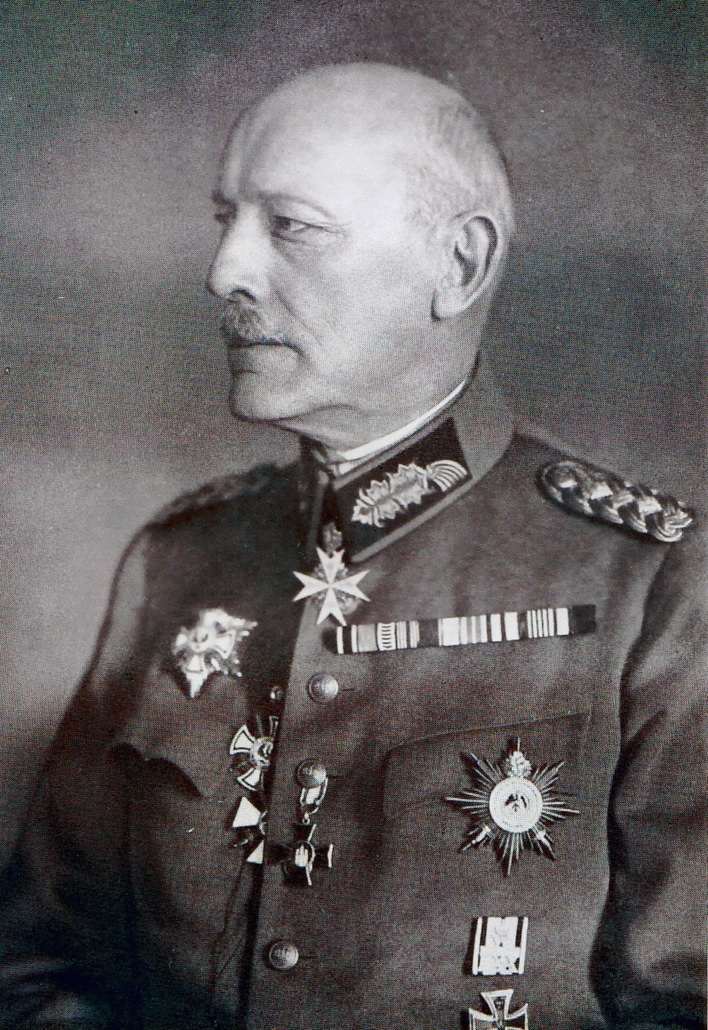 0
0 -
double posting... please delete. Sorry!
0 -
Hi Alex,
From the forum "Axishistory" thread http://forum.axishistory.com/viewtopic.php?f=5&t=164183&p=1445116:
Adalbert Mikulicz-Radecki
* 24.12.1888 in Czernowitz/Herzogtum Bukowina/Österreich-Ungarn (now: Oblast Tscherniwzi Чернівецька область/Ukraine)
+ 02.05.1958 in Wien
18.08.1909 k.u.k. Leutnant
01.05.1914 k.u.k. Oberleutnant
01.08.1916 k.u.k. Hauptmann
00.00.1920 österr. Stabshauptmann
01.07.1924 österr. Major
18.12.1934 österr. Oberstleutnant
15.03.1938 Oberstleutnant (m. Pat. v. 01.11.1934)
01.02.1939 Oberst (m. Pat. v. 01.08.1937)
01.09.1941 Generalmajor
01.02.1943 Generalleutnant
Vater: Gymnasial-Professor
00.00.1903 - 00.00.1906 Miltäroberrealschule mit Matura in Mährisch Weisskirchen
k.u.k. Kadettenschule
18.08.1909 Eintritt in das Bukowinische Infanterie Regiment “Erzherzog Eugen“ Nr. 41, Czernowitz
1913/14 Absolvierung des einjährigen Spezialkurses für Telegraphen- und Telefondienst
1914/18 Zug-Führer, Telefon-Offizier, Kompanie-Führer und Regiments-Adjutant im Infanterie Regiment 41
00.00.1920 Übernahme in das österreichische Bundesheer; Kompanie-Chef im österreich. Infanterie-Regiment
Nr. 3 “Erzherzog Carl“, Wien
00.00.1929 im Infanterie-Regiment Nr. 2, Wien
00.00.1936 Kommandeur des österreich. Alpenjäger-Bataillons Nr. 3 “Andreas Hofer“, Lienz/Osttirol
Absolvierung von 3 Heeresbergführer-Kursen
15.03.1938 Übernahme in die Wehrmacht
01.04.1938 Kommandeur des III. Bataillons/Gebirgsjäger-Regiment 137, Lienz
10.11.1938 im Regiments-Stab des Infanterie-Regiments 80, Koblenz
01.11.1939 Kommandeur des Infanterie-Regiments 366
10.10.1941 Führerreserve
29.10.1941 Feldkommandant 679 (FK 679) (dem Befehlshaber Heeresgebiet Süd unterstellt; der Stab, im Raum der 444. Sicherungs-Division eingesetzt, ist zunächst in Kirowgrad stationiert, danach in Bobrinez)
01.02.1942 Kommandeur der 444. Sicherungs-Division
14.10.1943 Führerreserve (Myocardschaden)
01.01.1944 Kommandeur des Divisionsstabs z.b.V. 417 (Landesschützen des Wehrkreises Wien)
15.05.1945 - 15.05.1947 in captivity
First marriage: since 01.01.1920 with Emilie Zelinka (+ 28.08.1945)
2th marriage: since 05.07.1949 with Margarete Panzner.
k.u.k. Militärverdienstkreuz III. Klasse mit der Kriegsdekoration und den Schwertern
EK II und I, Deutsches Kreuz in Gold
Heeresbergführerabzeichen
ciao,
Claudio
0 -
Hi Chris,
Did you check and compare this piece with the ones that Thies had for sale in his last auctions? He offered a few of them which were bought from quite Hessen specialized collectors in Germany. There are a couple of German collectors who post frequently on the German forum (www.sammlergemeinschaft-deutscherauszeichnungen.org) who might give surely you some more definitive answer on this piece.
Ciao,
Claudio
0 -
And then there is always “... IF YOU PLAN ON CONTACTING ME JUST TO MAKE REMARKS , KEEP THEM TO
YOURSELF , WHAT HAS BEEN DONE , HAS BEEN DONE.” Are you kidding? I think that I was married to this
gal back some years ago.

I am sorry to hear that from you Chris... here in Sweden where I currently live and work, woman are very attractive but also very emancipated and extremely bossy...

 :rolleyes:0
:rolleyes:0 -
Florianopolis... it bring back sweet memories to me!
 That German Navy office really chose a great place to settle down in Brazil. It's one of my favorite places... great beaches, beautiful looking girls and delicious BBC restaurants (Churrascarias)!!! Way to go...
That German Navy office really chose a great place to settle down in Brazil. It's one of my favorite places... great beaches, beautiful looking girls and delicious BBC restaurants (Churrascarias)!!! Way to go... 

http://travel.nytimes.com/2009/01/11/travel/11party.html
0 -
Also if she sells the orders separately I bet she won't get together more than a third of her asking price, since some of them are chipped or damaged.
Such a waist of time and money... Sometimes greed takes over common sense; like in this case... I only hope that she won't find a naive and rich buyer, but I dare to think nobody is stupid enough to spend such money on a such already taken apart, bad conditions and uncomplete medal bar!


ciao,
Claudio
0 -
No Vince, I have no idea where his medal bar could be... the auctioneer didn't give any details more. Maybe he didn't have a medal bar, had his WWI decorations not mounted, but had for sure more than 1 set of ribbon bars. As you can see from the pictures he wore also a 1 row ribbon bar and in my group there's one with 2 rows...
If there was one medal bar and was assembled by the same Ordenslieferant-Juwelier who put together the miniatures (Godet), it must have been quite a sight... :speechless:
0 -
2nd page of his interesting CV...
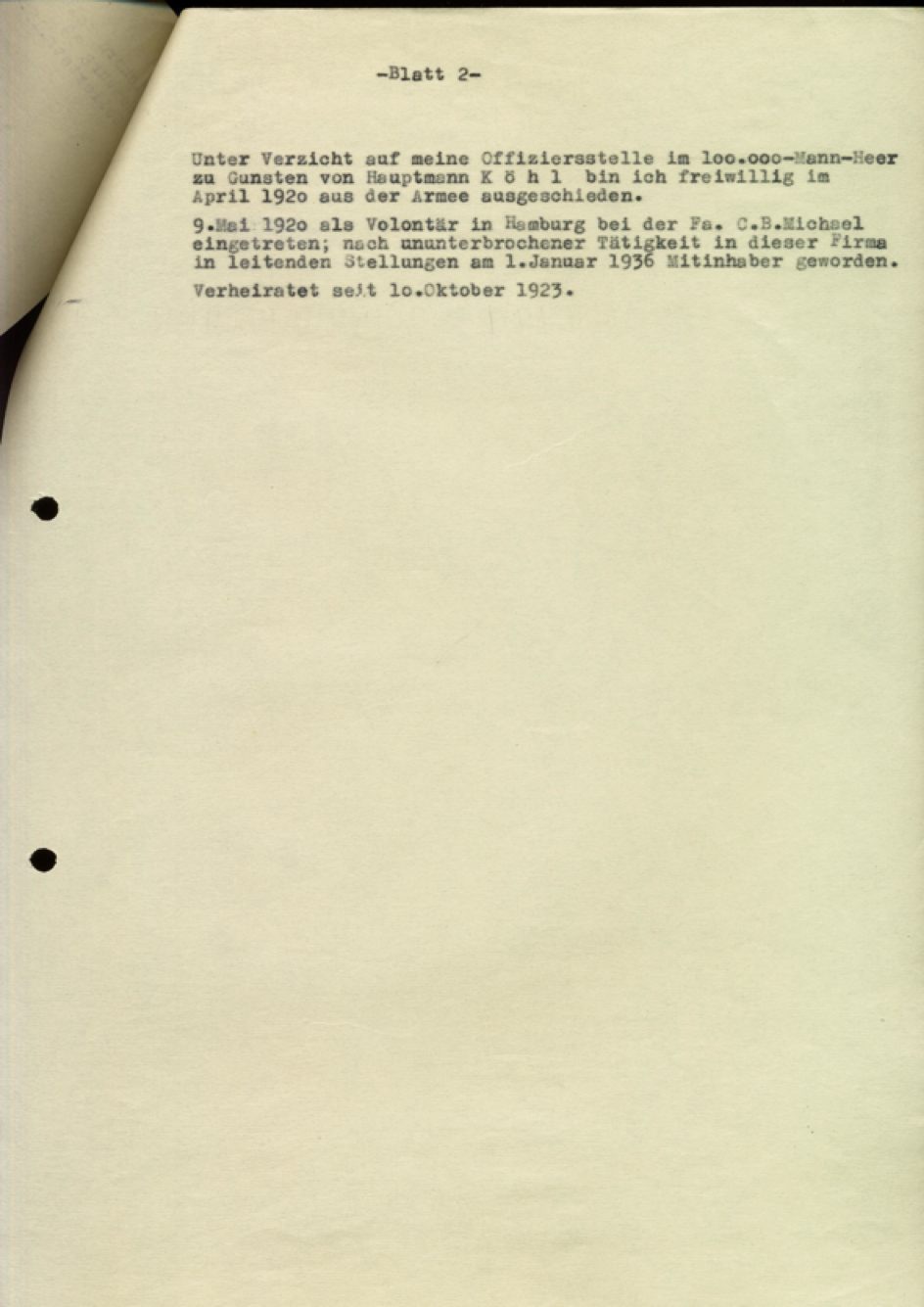 0
0




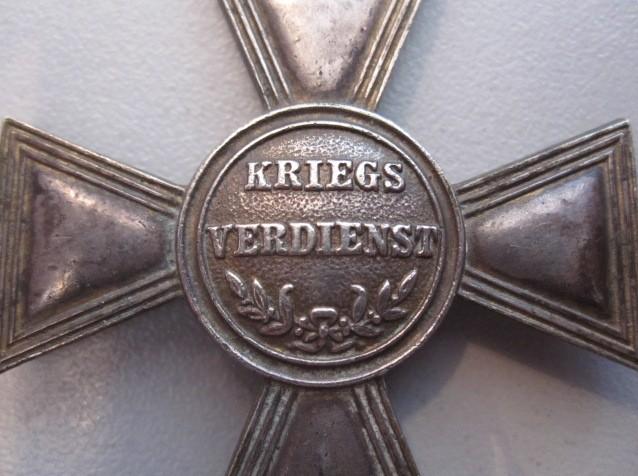
Saxon Duchies Ribbon Bar
in Germany: Imperial: The Orders, Decorations and Medals of The Imperial German States
Posted
Hi everybody!
I saw also this ribbon bar for sale... I wasn't completely convinced; maybe it was more my gutt-feeling to let me keep off this bar. Strange the combination for a obviously Saxon citizen (Coburg-Gotha) to get a Bavarian long service fire brigade ribbon... The constrution doesn't look bad, but I have only seen one other ribbon bar device like this (see last two Kube's auctions) and never had the chance to see "live" one of them.
Ciao,
Claudio